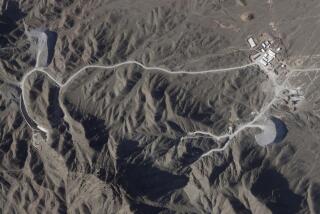When the Last Cowboy Hangs Up His Spurs, What Then?
The cowboy is riding reluctantly into the sunset. The culture wars and simple economics are catching up with the fabled myths of open range, ranch and cowpoke. Once again, and maybe for the last time, the American West is coming up for grabs.
It’s about time.
For a good share of the last century, livestock ranchers have reigned on 300 million acres of public lands, most of them here in the West. You probably know the story: denuded range lands, polluted water, exterminated wildlife -- all of it made possible by the nation’s reverence for a pioneer way of life and insidious subsidies from urban taxpayers.
But not so fast. What comes next? As the cowboy is squeezed out by changing values and meager earnings, who will take his place? What ethos will take root in the last of our wide-open spaces?
Perhaps things could get worse as public-lands ranching yields to the ranchette subdivision, to industrialized recreation and to resource development. Or conversely, landscapes could get better with a “re-wilding” of our public lands -- restoring buffalo and beauty, creating elbow room worth having for generations to come. This fight for the last of our open spaces is now intensifying as the population center of the U.S. creeps west with each census.
Last week, the activist core of the nation’s anti-grazing movement convened in an annual war council against the cowboy. “Ranching is a dying business in the West,” said George Wuerthner, co-editor of a comprehensive new book titled “Welfare Ranching: The Subsidized Destruction of the American West.”
The assembled crowd expressed a consensus view: Hasten the inevitable before more damage is done. To that end, an umbrella group called the National Public Lands Grazing Campaign has begun lobbying Congress and seeking support among ranchers for legislation to have the government buy up grazing permits, cashing out with livestock raisers to preserve families, although not their way of life. One more subsidy payment for the sake of forest and grasslands that belong to the citizens of the U.S. and Western states, a combined area equal to three Californias.
Today, for less than the cost of a can of dog food each month, ranchers can graze a cow and a calf on federal lands (state permits vary in cost) -- at no end of vandalism to the landscapes and webs of life in the arid West. Even at those prices, livestock raisers are struggling, and increasingly losing, to drought, competition from low-cost imported meat, environmental lawsuits and a demographic drift in which young people are fleeing the ranch.
For all the fury over grazing, urban Americans are not likely to notice the gradual disappearance of the public-lands rancher, at least not at the dinner table. Less than 2% of livestock producers rely on federal and state grazing lands. But in legend and sometimes in fact, livestock-raising has long served to justify Western open space. And for that reason, there was a backdrop of defensiveness, melancholy, even a touch of dread, at this meeting of anti-grazers. Sundown for the cowboy is dawn for ... what?
“It’s not a question of [land] use or no use, but of development or traditional use,” warned William Myers, the former cattlemen’s lobbyist who is now the chief lawyer for the Bush administration’s Department of Interior. After all, this president’s policy is to favor local interests in those Western states that tilt to the GOP and its view of progress. If not ranching, then, say, energy development, mining, public resource privatization, real estate speculation and surely motorized and Disney-fied recreation.
For their part, anti-grazers assume a lush, idyllic future for Western public lands once cows are driven off: thigh-high grass, wildflowers, clean streams, recovering wildlife. Leaders of the movement argue that public-lands grazing has done little to stop the filling-in of the map’s blank spots, and now is the time to admit it.
But there is nothing to guarantee their alternative vision of tomorrow either. The lopsided pro-development politics of the intermountain West have all but rendered environmentalists a noisy protest group at the ballot boxes here. The once-towering leaders of Western conservation, like Frank Church, Morris and Stewart Udall and William O. Douglas, seem even more quaint than the cowboy. The best hope of today’s activists lies in energizing urban residents elsewhere in the nation to defend lands that all of us share deed to.
“What triggers these passionate debates is that the West still remains our field of dreams,” said my colleague Frank Clifford, author of “The Backbone of the World: A Portrait of the Vanishing West Along the Continental Divide.” “In the end, we may be able to accommodate each other, but not all of our dreams.”
More to Read
Start your day right
Sign up for Essential California for news, features and recommendations from the L.A. Times and beyond in your inbox six days a week.
You may occasionally receive promotional content from the Los Angeles Times.






